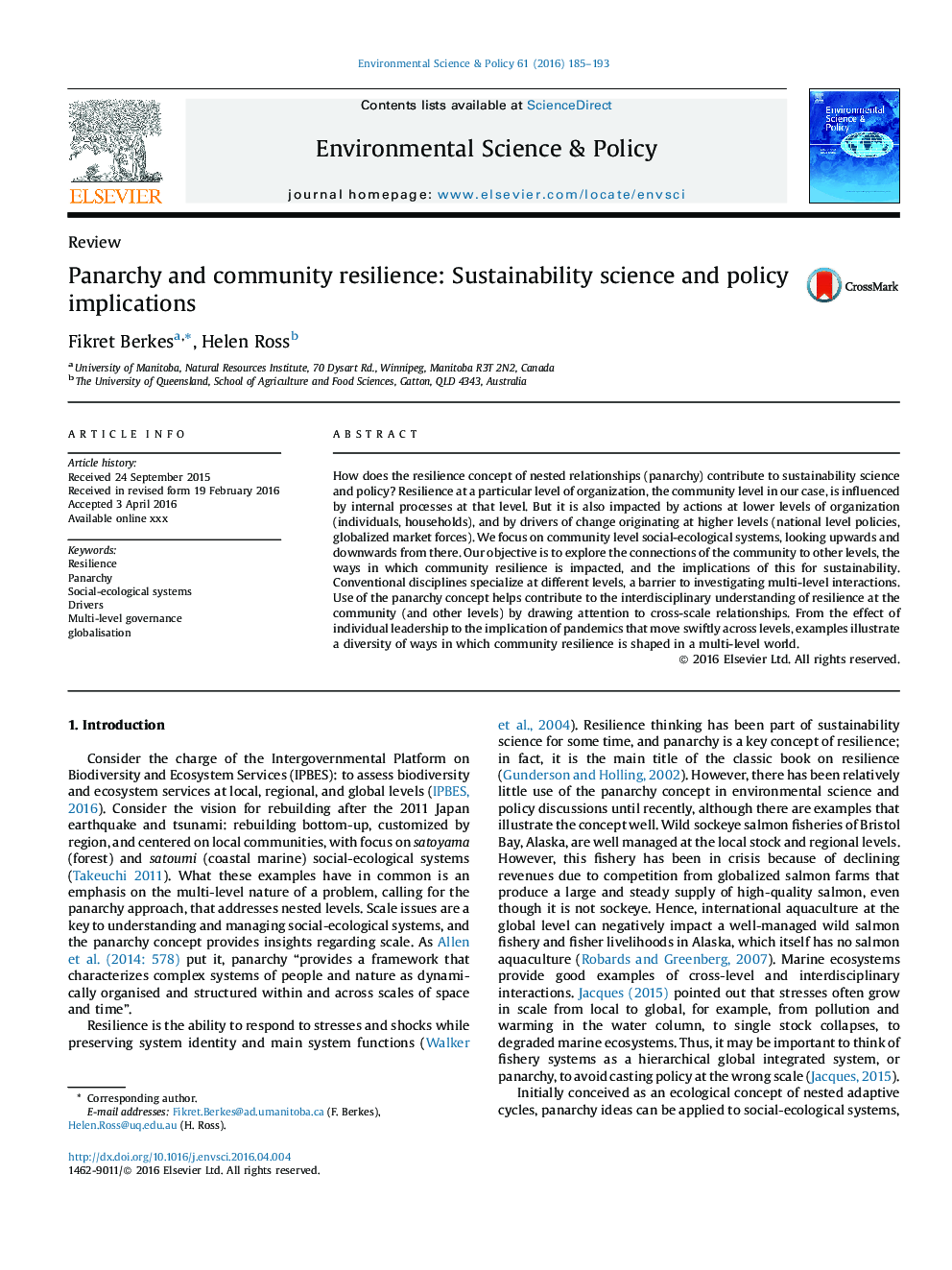| Article ID | Journal | Published Year | Pages | File Type |
|---|---|---|---|---|
| 7466882 | Environmental Science & Policy | 2016 | 9 Pages |
Abstract
How does the resilience concept of nested relationships (panarchy) contribute to sustainability science and policy? Resilience at a particular level of organization, the community level in our case, is influenced by internal processes at that level. But it is also impacted by actions at lower levels of organization (individuals, households), and by drivers of change originating at higher levels (national level policies, globalized market forces). We focus on community level social-ecological systems, looking upwards and downwards from there. Our objective is to explore the connections of the community to other levels, the ways in which community resilience is impacted, and the implications of this for sustainability. Conventional disciplines specialize at different levels, a barrier to investigating multi-level interactions. Use of the panarchy concept helps contribute to the interdisciplinary understanding of resilience at the community (and other levels) by drawing attention to cross-scale relationships. From the effect of individual leadership to the implication of pandemics that move swiftly across levels, examples illustrate a diversity of ways in which community resilience is shaped in a multi-level world.
Related Topics
Physical Sciences and Engineering
Energy
Renewable Energy, Sustainability and the Environment
Authors
Fikret Berkes, Helen Ross,
